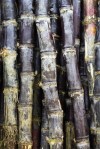Sugar Futures
 It is hard to imagine a world without sugar. In fact, with no sugar, all life would be wiped out since DNA and RNA are made up of sugar. Perhaps because we can’t imagine life without it, sugar has had a significant impact on world history. The first noted production of sugar took place in the Indian subcontinent thousands of years ago, but it was not until we invented mass-production and transportation did the sugar market expand to international importance. Brazil is, without a doubt, the highest producer of sugar to date. Today, sugar granules are derived largely from sugar cane or sugar beet, but regardless of the source, the end product is the same.
It is hard to imagine a world without sugar. In fact, with no sugar, all life would be wiped out since DNA and RNA are made up of sugar. Perhaps because we can’t imagine life without it, sugar has had a significant impact on world history. The first noted production of sugar took place in the Indian subcontinent thousands of years ago, but it was not until we invented mass-production and transportation did the sugar market expand to international importance. Brazil is, without a doubt, the highest producer of sugar to date. Today, sugar granules are derived largely from sugar cane or sugar beet, but regardless of the source, the end product is the same.
Sugar Contract Specifications
→ Click Here for Sugar Contract Specifications
Sugar Facts
Sugar cane is what impacted the vast world sugar trade. Sugar cane is a hot weather plant and was first cultivated in the Caribbean and Brazil when Columbus introduced the plant. Currently, the largest producing areas are in South Asia, Brazil, the Caribbean and the Southern U.S. (Florida, Louisiana, Texas and Hawaii). Sugar cane is a perennial and is grown from cuttings or pieces of the stalk. Of all the sugar produced, 75% are processed from sugar cane.
As sugar beets are grown in cool temperate areas, it is mainly cultivated in the Northern Great Plains, Germany and France. The sugar is contained in the root of the beet but is identical to the sugar in canes. Sugar beets are annuals grown from seeds and are planted in the spring to be harvested in the fall. The sugar processed from beets make up 25% of total sugar production.
Last updated May 2013.